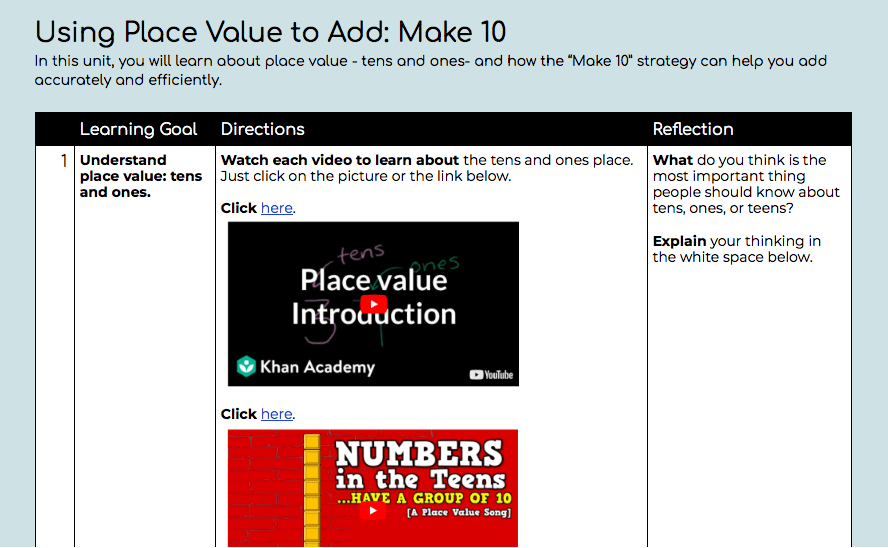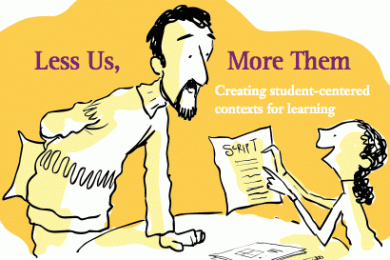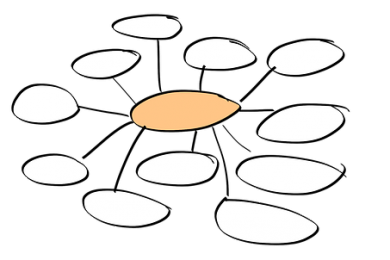Using HyperDocs in the Classroom:
In 1st grade, I’m just so used to gathering my kiddos for a 5-10 minute mini-lesson, then sending them off to practice something that’s a little bit new. So I had to really dig deep and think about when and how a HyperDoc could be of best value to younger kids and how to ensure they could work through a mini-unit with independence.
I can see taking the online resources that we usually do as a whole class, resources that kids really could work through independently, and putting them together to create a mini hyperdoc. In social studies, I could plan a hyperdoc around the topic of Leadership where kids could explore what good leadership looks like and sounds like utilizing a variety of online resources such as videos, podcasts, speeches, and online read alouds. As part of their collaboration work, they can work with a partner to curate and rank 5 examples of leadership and then justify their rankings.
Within a weather science unit, I’d like to try creating a hyperdoc around academic vocabulary. I use Martha Speaks videos in various content areas — rather than watching and discussing the videos as a class, they could maybe become part of a vocabulary hyperdoc.
The HyperDoc I Created:
is about understanding place value (tens and ones) and how making a group of ten helps you add efficiently and accurately. Since we have a base ten system and can only write numbers as tens and ones, it’s critical for kids to be visualizing quantities in this way. For example, if they are adding 7 + 8, they should be thinking about how they are going to break the numbers apart to make a group of ten and ones. For instance, 7 + 3 + 5 = 15 or 8 + 2 + 5 = 15. You can see how this is also a precursor to understanding associative and commutative properties of addition.
My Hyperdoc: Learning Cycle + Resources, Differentiation, and Active Participation
Note: Reading abilities in first grade, like in all grades, vary. It could seem like the language used in this hyperdoc might be too advanced for 1st-grade readers. I designed this hyperdoc with the understanding that I will assign it after I have intentionally scaffolded the language throughout the year; this might be through morning messages, writers workshop modeling, written responses in journals, during math mini-lessons, etc. I’m confident that through context, prior knowledge, and use of known reading strategies, kids will be able to read and work through this hyperdoc with independence since I will have intentionally planned for this.
My hyperdoc mini unit:
Working through the learning cycle, kids will first EXPLORE the concept of place value by watching a couple of videos. The first video from Kahn Academy provides a nice introduction of tens and ones using pictures, numbers, and words. The second video is a catchy song about “teen” numbers, emphasizing that numbers in the teens all have one group of ten. All these resources point to the big idea that we can count objects and once we get to ten, we can put those ten objects together into one group so we don’t have to keep recounting them.
Then kids will watch 3 videos that EXPLAIN through direct instruction how the strategy “Make 10” can be used to solve addition problems. Each video teaches the same concept using different visuals – tally marks, number lines, pictures, numbers, and tens frames. It’s important for kids to see a variety of visuals, so they can choose a strategy that is in their zone. (The 2nd video is from Kahn Academy, but I did my own voiceover via Edpuzzle, so I could explain it exactly the way I wanted to.)
After that, they’ll PRACTICE adding 2 groups by “making 10” via online activities and/or an optional challenge activity, which requires mentally breaking a group apart to make 10.
APPLICATION happens when they create a story problem that can best be solved by making 10. They’ll need to really think about the numbers they choose. They can work independently or with a partner.
They’ll SHARE their story problem on a class padlet, then pick a different story to solve that’s been posted by another group. They’ll explain how they would solve it by leaving a comment.
Finally, kids will take a short ASSESSMENT which will provide them with feedback as well as provide me with data to inform my instruction.
Here’s a screenshot of my HyperDoc.

Click here to view a copy.










